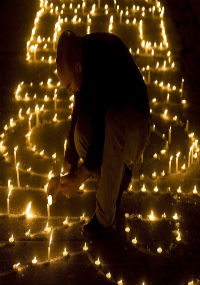Source: OHCHR
“Torture is a man-made disaster,” said Felicitas Treue. “Wherever it takes place it is an emergency situation and a direct attack against the victim, against their family and their community.”
Treue is the co-founder of Colectivo Contra la Tortura y la Impunidad, a Mexican organization that provides support for torture victims and their families. She made her statement during a public meeting on the issue of redress to victims of torture organized by the UN Fund for Victims of Torture in Geneva. The meeting brought together practitioners and experts in the medical, psychological, legal and social rehabilitation of torture victims to exchange knowledge and best practices.
Since 1981, the Fund has financed rehabilitation centres providing assistance to close to one million torture victims. The aim is to assist victims and their families in rebuilding their lives and seeking redress for the human rights violations they have suffered.
“But is enough being done to fight against torture and impunity?” asked Suzanne Jabbour, director of Restart Centre for Rehabilitation of Victims of Violence and Torture in Lebanon. That answer, she said, is no.
“If you feel embarrassed about the answer, and you still doubt how fundamental this should be, please, allow today to be the day, of renewed commitment,” Jabbour said.
Normalizing Pain
The consequences of inaction in dealing with torture is the creation of a generation of young people who believe that pain and suffering are usual, said Peter Kiama, executive director of the Independent Medico Legal Unit based in Kenya. Poverty is the new face of torture, with poor young people being recruited into groups that routinely use the practice, he said.
“What this means is that youth grow up believing pain is normal and then these people come back and inflict pain on us, and we are surprised,” he said. “This is the time to increase support for the fight against torture and ill treatment so that we stop normalizing pain as. . .part of growing up in our society.”
“Someone to protect you”
According to a recent report from Amnesty International, 141 countries have committed torture and ill-treatment to their citizens, said Lin Piwowarczyk, a psychiatrist at the Boston Medical Center in the United States. An estimated 30 percent of the current population of refugees worldwide have experienced some form of torture, and agencies have to learn how to deal with this increasing challenge, she said.
Piwowarczky related the story of a patient called Mary. When Mary came to the centre, it was clear she was suffering from the after effects of torture-related trauma. She made no eye contact. She cried much of the time and hardly spoke. She was 27 weeks pregnant from the multiple rapes she had to endure at the hands of the military in her home country, Piwowarczky said.
However, through intense therapy Mary has begun to heal. During one therapy session, Mary took the hands of the therapist and gave her a deep blue wooden necklace. Before she escaped her country, Mary’s mother gave her the necklace with instructions: “Someday you will find someone who will protect you. Give this to them.”
“I hand this necklace to each of you symbolically,” she said, holding up the necklace to the audience. “The question I have for each of you here today, who are in the position to have great impact, is, will you?”
For more information, visit http://www.ohchr.org/torturefund
Bios and quotes from Experts participating in this week’s meeting can be viewed at:
http://www.ohchr.org/EN/Issues/Torture/UNVFT/Pages/41stSession.aspx
– See more at: http://www.ohchr.org/EN/NewsEvents/Pages/TortureFundMeeting.aspx#sthash.BaILLX43.dpuf


